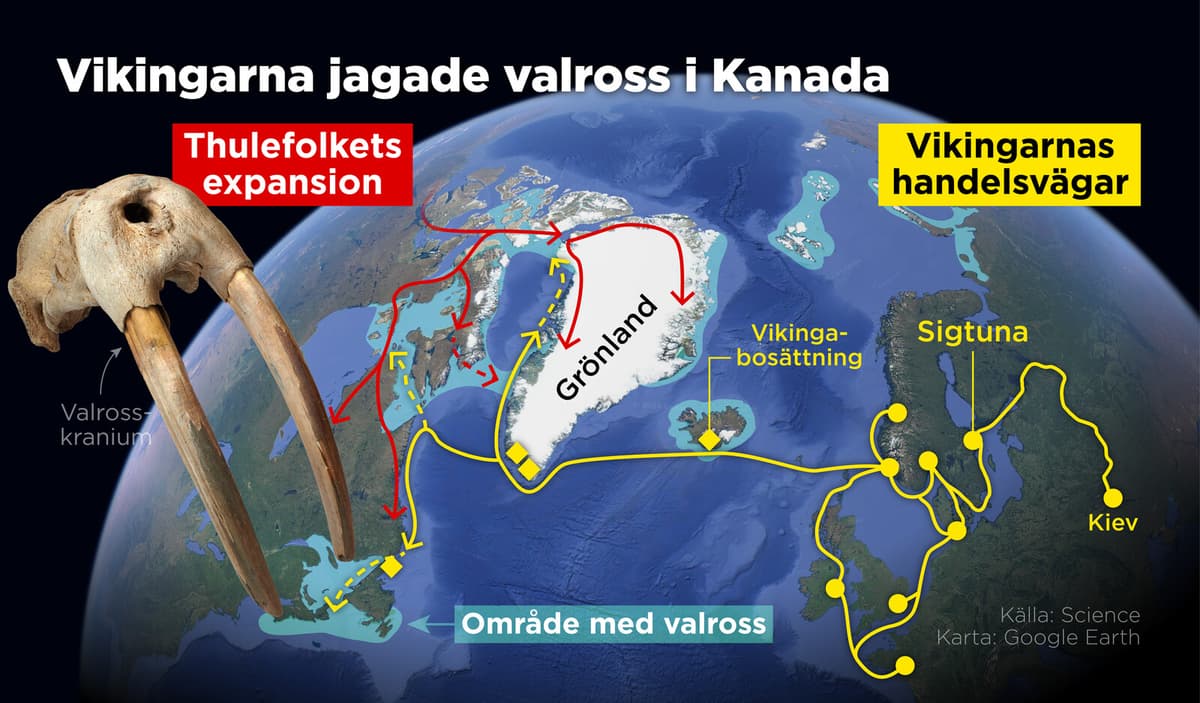The demand for ivory from walrus tusks was high in Europe during the Viking Age.
In special workshops, they were transformed into beautiful objects used by the church, royalty, and leaders. It was a kind of consumption for the elite, says Peter Jordan, professor of archaeology at Lund University.
But where this ivory came from has been more unclear. It is known that the Vikings exterminated walruses on Iceland in their hunt for tusks, and that the Vikings also established themselves on southern Greenland.
Now, researchers at, among others, the University of Copenhagen and in Lund have genetically examined several ivory finds and discovered that they come from walrus populations in the sea between Greenland and Canada, and possibly from the inner parts of the Canadian Arctic.
Silk Road in the North
The finds suggest that the Vikings between 950 and 1250 followed Greenland's west coast all the way up to the northwest tip. To see if it was even possible, researchers test-sailed in copies of the Vikings' wooden ships.
We used a lot of experimental archaeology, says Jordan.
At the same time as the Vikings expanded northwest, another people – the Thule people – moved east from present-day Canada. They also hunted walruses and likely encountered the Vikings and began trading with them, according to the researchers, which is hundreds of years before Columbus reached America. It became a kind of silk road for ivory in the north.
We believe that this is one of the main areas for the first globalized human contacts between different branches of humanity, says Jordan.
"Great Mystery"
What the Inuit may have received in exchange for the valuable ivory from the Vikings is unclear, but iron objects from Europe have been found in Inuit archaeological finds. On the other hand, the Greenlandic Vikings also lacked iron.
It's one of the great mysteries, but now we know that walrus tusks came to the Greenlandic colonies in the north to Europe and places like Kiev, Sigtuna, London, and Dublin, says Peter Jordan.
The researchers have examined ivory from walruses and, using DNA technology, seen which populations they came from.
According to the study, there is support for the Vikings on Greenland likely hunting walruses far up along Greenland's west coast, possibly all the way into present-day Arctic Canada. There, the Vikings likely encountered the Thule people (from whom today's Inuit descend) and possibly people from the Dorset culture, with whom they may have traded ivory.
The study is published in Science Advances.






